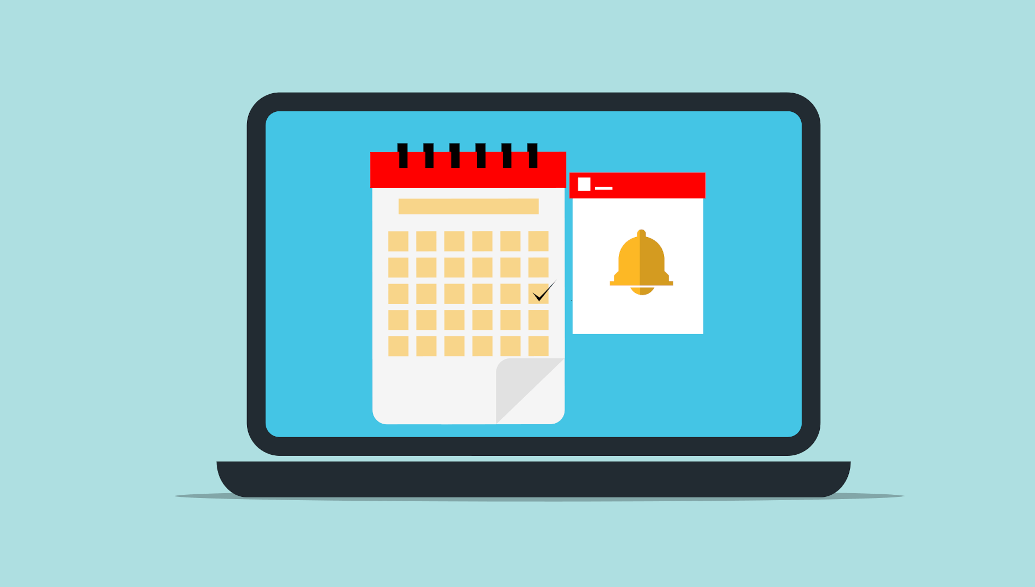Learning with mind maps is without doubt one of the most effective and efficient learning methods. Although it is an unusual way of presenting knowledge, the mind map is an indispensable tool for exam preparation. Why? Because it can be used to break down even complex topics and present them in an understandable way. Find out exactly what a mind map is and how you can use it in the following article.
What is a mind map?
Before you think about how mind maps can increase learning success, it is important to clarify the following question: What are mind maps and when does a mind map make sense?
First, you record the main topic, which takes up a central position on the sheet or screen. All relevant information can then be placed around the core topic. To provide additional structure, many experienced mind mappers use subtopics, which in turn group the basic information. This makes it easy to maintain an overview.
Good to know: There is no one-size-fits-all answer to the question of when a mind map makes sense. However, this strategy is generally recommended whenever you are dealing with complex topics and want to create a mental bridge between individual concepts.
How do you create a mind map?
As you already know, a mind map is an important tool for visualizing complex topics. With its help, it is much quicker to memorize the content to be learned. But how do you actually create a mind map?
There are basically two different approaches: working with pen and paper and the digital version. The digital approach is particularly interesting, as you can share such a mind map with others or synchronize it with different devices. There are now even special apps for creating mind maps. Once you have decided on a variant, you can focus on your core topic again. The question of how to create a mind map can be answered as follows:
- Step 1: Capture the main topic at a central point, either on a sheet of paper or digitally.
- Step 2: Record all sub-topics that are relevant in this context. Ideally, you should assign different colors for different subcategories.
- Step 3: Connect the sub-themes to the main theme using a line.
- Step 4: Add all relevant information to the subtopics that is of interest for both the respective subtopic and the main topic. Link this information to the associated subtopics.
- Step 5: Check whether your mind map contains all the relevant information. If not, add the missing points until your mind map appears complete.
By the way: In addition to pure text, it can also be exciting to add images or small icons to the mind map. Such elements are particularly easy to remember and therefore provide you with additional support when learning.
Learning with mind maps: These are the advantages

The advantages of mind maps are extremely diverse. However, the most important benefits include the following points:
- Mind maps ensure that complex topics can be presented in a clear and structured way.
- Unlike index cards, mind maps also provide an overview of the big picture.
- Linking individual terms makes it easier to recognize connections between individual subtopics.
- Gaps in knowledge can be revealed very quickly when creating mind maps.
- Colors, shapes, and pictures can make learning easier, depending on your personal learning type.
- Digital mind maps are easy to take with you so that you can review the material wherever you are.
- Learning with mind maps is much more transparent, as the mind map summarizes all relevant information on a single page.
Digital mind maps: Apps to create mind maps
Apps for creating mind maps are an excellent solution – and not just if you are already tech-savvy. In fact, the digital version offers valuable advantages when learning with mind maps. These include the fact that sufficient space is available and they allow you to learn from any location. The following apps are particularly interesting:
- FreeMind: This open source software is free to use and can be installed directly on your PC. The tool also offers many interesting options for creating mind maps.
- Mind-Map-Online: Mind-Map-Online is an intuitively designed tool that you use directly in the cloud. No prior installation is therefore necessary. Instead, you can register online and save your mind maps or simply print them out.
- Simplemind: If you are looking for a mind map app for your smartphone, Simplemind could be the right choice. It works on both Apple iOS and Android devices. You also have the choice between basic functionality or paid premium features.
- Wisemapping: Wisemapping is one of the most important apps for creating mind maps. It is similar to Mind-Map-Online, but offers additional symbols and emoticons. You also have the option of assigning sub-topics to individual symbols to make learning even easier.
Tip 1: Observe the correct order when reading the mind map
In order to benefit from the advantages of learning with mind maps, it is first important that you read the mind map correctly. This is because the correct reading flow ensures that the individual sub-items are developed thematically correctly.
- The main topic is in the center of the map. You should therefore focus directly on the center of the mind map.
- Next, read the subheadings, or more precisely the subtopics. This makes it easier to gain a quick overview.
- Decide which categories are particularly important to you at this moment and focus on four to ten branches first.
- Then look at each individual branch. This means that you concentrate on all the information that has been recorded for a particular subcategory.
- Once you have dealt with the individual branches, you should look at the entire mind map again. This will ensure that you can transfer the facts you have learned into a coherent overall picture.
By the way: If the topic is very extensive, your mind map may have several branching subcategories. If this is the case, repeat points 2 to 4 as often as necessary to absorb and internalize the available information.
Tip 2: Create mind maps over longer periods of time
You ask yourself: What can you learn with mind maps? Basically, there are no thematic requirements or specifications regarding the amount of material to be learned. It can therefore be worth using mind maps long before the exam preparation or the next exam.
This means that you can use the map to prepare for or follow up on lessons, for example. In this case, the collection of information continues to grow with each lesson until it is complete.
This approach means that you can keep your daily workload to a minimum. At the same time, it is easy to repeat the new material and consolidate it regularly. It also saves you long nights before upcoming exams and reduces the stress that could otherwise have a negative impact on your performance.
Tip 3: Images and colors for effective learning

Most people find it much easier to remember pictures than simple text. You can take advantage of this fact if you want to make learning even more effective with mind maps. Although a picture is not suitable for every topic, it can be used to visualize processes, for example, making them easier to learn. Alternatively, most mind map programs offer a selection of different symbols or emoticons. They can also help you to take advantage of the benefits of mind maps by making it easier for you to memorize your subtopics.
In addition to images or symbols, it is also advisable to use colors or other formatting. The reason for this is that they can signal a thematic affiliation. It is also interesting that the brain can access this link between colors and facts.
Tip 4: Don’t get caught up when creating mind maps
Mind maps can quickly degenerate into small works of art. Here it is important to consider the benefits and effort involved. Of course, it’s nice to learn with a visually appealing map. However, this can mean that you start several drafts and try to make them as beautiful as possible instead of internalizing the content. This can be an immense distraction that takes you away from learning.
In many cases, it therefore makes sense to opt for a digital approach. Although this does not offer the advantages of manual writing, apps and online tools offer completely different benefits. One of the most important benefits of the app is that you can move the subtopics around afterwards. This means there can never be too little space, nor can you be forced to cross out entire sections because you have assigned them incorrectly, for example.
Tip 5: Turn learning with mind maps into a routine
How do you learn effectively with mind maps? The easiest way is to get into the habit of learning with mind maps. The reason for this is simple: as with everything else, practice makes perfect with this learning method. The more often you summarize your notebook entries or notes using this method, the easier it will become over time. In the long term, you will be able to assess at first glance how you need to categorize the subtopics in order to find your way around later. You will also learn over time how important additional elements such as images, colors or formatting are so that you can quickly and reliably absorb the information you have gathered. In this way, you will benefit from the advantages of mind maps day after day, so that learning with mind maps becomes second nature to you and becomes something you do every day.
Conclusion: Learn more effectively with mind maps
The advantages of learning with mind maps undoubtedly speak in favor of this tool: mind maps combine visual aspects with the grouping of all relevant information. Regardless of whether the choice falls on analog tools or apps to create mind maps, it is important to consider the basics for creating mind maps. This includes ensuring that each strand of the map follows a single sub-topic or train of thought. This maintains a clear structure that supports effective learning with mind maps.
Basically, mind maps are good for pupils, students or professionals as they deviate from the usual learning style and help to understand and learn complex topics.
Related Article: Which learning method is most effective?



